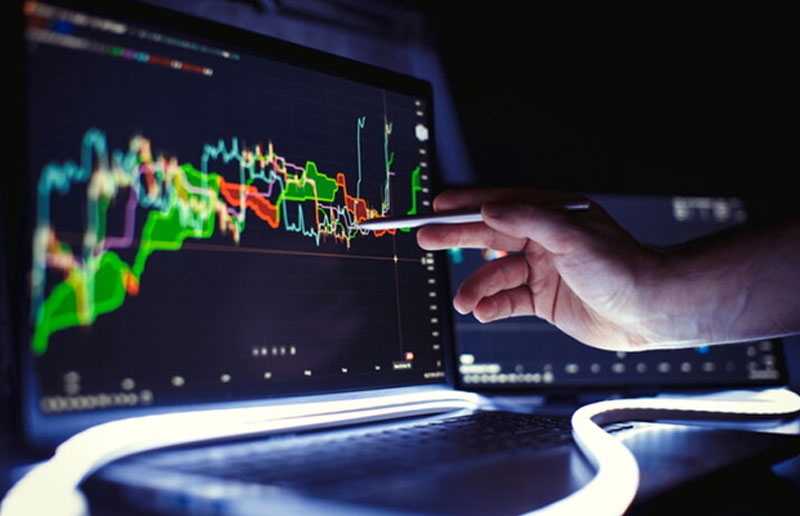 Futures options trading encompasses a variety of financial strategies that combine the unique characteristics of options contracts with those of futures contracts. This sophisticated trading approach allows traders to capitalize on price movements across a diverse array of futures markets, including grains, currencies, precious metals, and stock indices. In this comprehensive discussion, we will delve into the intricacies of futures options trading, exploring various trading strategies, the advantages they offer compared to straightforward futures trading, and the dynamics of buying and selling futures options.
Futures options trading encompasses a variety of financial strategies that combine the unique characteristics of options contracts with those of futures contracts. This sophisticated trading approach allows traders to capitalize on price movements across a diverse array of futures markets, including grains, currencies, precious metals, and stock indices. In this comprehensive discussion, we will delve into the intricacies of futures options trading, exploring various trading strategies, the advantages they offer compared to straightforward futures trading, and the dynamics of buying and selling futures options.
Understanding Futures Options
Futures options are derivative contracts that provide the holder the right, but not the obligation, to buy or sell a futures contract at a specified price (known as the strike price) on or before the expiration date. These options are traded on organized exchanges, such as the Chicago Mercantile Exchange (CME), which offers a wide variety of underlying assets.
The two primary classifications of futures options are:
- Call Options: These grant the buyer the right to exercise the option, thereby obtaining a long position in the underlying futures contract at the strike price before the option’s expiration date.
- Put Options: These grant the buyer the right to exercise the option, thereby obtaining a short position in the underlying futures contract at the strike price before the option’s expiration date.
Trading Strategies for Futures Options
Buying Options
One of the most straightforward strategies in futures options trading is buying options. Traders may purchase call options if they anticipate a rise in the underlying asset’s price or put options if they expect a price decline. This strategy offers limited risk (the premium paid for the option) with potentially unlimited rewards, making it particularly attractive to speculative traders looking to leverage market movements.
For instance, if a trader believes that crude oil prices will increase, they might purchase call options on crude oil futures. If the market moves as predicted, the value of the call option increases, allowing the trader to profit.
Selling Options
Selling options, also known as writing options, involves taking on the opposite outcome. Option writers receive the premium paid by option buyers but take on the obligation to fulfill the terms of the option if it is exercised. This strategy is suitable for traders seeking income generation or those with a neutral to slightly bearish or bullish outlook on the market.
For example, an options writer might sell put options on gold futures if they believe gold prices will remain stable or rise slightly. If the market behaves as expected and the put options expire worthless, the writer retains the premium as profit. However, selling options carries unlimited risk, as adverse market movements can result in substantial losses.
Spreads and Combinations
Traders can also create more complex strategies by combining multiple futures options. These strategies include spreads, straddles, and strangles:
- Spread Strategies: This involves simultaneously buying and selling options on the same underlying asset but with different strike prices and/or expiration dates. Examples include bull spreads and bear spreads, which can be used to capitalize on directional movements or volatility changes.
- Straddle and Strangle Strategies: These involve buying both call and put options (straddle) or out-of-the-money call and put options (strangle) with the same expiration date. These strategies are employed when traders expect significant price movements but are unsure about the direction.
Advantages of Futures Options Trading
- Limited Risk, Unlimited Potential: Unlike futures trading, where losses can exceed the initial investment, purchased options limit the risk to the premium paid. This makes it suitable for risk-averse traders or those looking to hedge their positions.
- Diverse Strategies: Futures options offer a wide range of trading strategies to profit from various market conditions, including bullish, bearish, and neutral scenarios. Traders can adapt their approach based on their outlook and risk tolerance.
- Leverage: Futures options allow traders to control a larger position with a relatively small amount of capital. This leverage amplifies potential returns but also increases the risk, requiring prudent risk management.
- Flexibility: Futures options provide flexibility in terms of expiration dates, strike prices, and underlying assets. This versatility enables traders to tailor their positions to specific market expectations and timeframes.
- Risk Management: Futures options can be used effectively for risk management purposes, such as hedging against adverse price movements in existing futures positions. This helps mitigate potential losses and stabilize portfolio performance.
- Lower Capital Requirements: Compared to outright futures trading, futures options typically require lower initial capital, making them accessible to a wider range of traders, including retail investors.
Comparing Futures Options to Futures Trading and Futures Day Trading
Options vs. Futures Trading
Futures options offer several advantages over traditional futures trading:
- Limited Risk: Purchased options traders have predefined risk (the premium paid) compared to futures traders who face unlimited risk if the market moves against their positions.
- Flexibility: Options provide more strategic flexibility with various combinations and spreads, allowing traders to adapt to changing market conditions.
- Leverage with Lower Capital: Options offer leverage while requiring lower initial capital compared to outright futures positions, making them attractive for traders seeking exposure with reduced risk.
- Risk Management: Options can be used for hedging purposes to manage risk in existing futures positions, providing a level of protection against adverse market movements.
Options vs. Day Trading
Options trading differs from day trading in several ways:
- Time Horizon: Options traders typically have longer time horizons, focusing on price movements over weeks or months, while day traders aim to profit from intraday price fluctuations.
- Risk Profile: Day trading often involves rapid buying and selling of securities within a single trading day, exposing traders to higher volatility and market risk compared to options trading.
- Diversification: Options trading can offer the opportunity for diversification across various assets and strategies, while day trading often focuses on specific securities or market sectors.
- Capital Efficiency: Options trading can be more capital-efficient as it requires a lower initial investment compared to day trading, where traders need substantial capital for frequent trades.
Futures options trading provides a wide range of strategic and risk/reward possibilities for traders to participate in financial markets, including positions with limited risk. They offer flexibility in structuring the risk/reward parameters of market outlooks. Whether buying options to speculate on price movements, selling options for income generation, or using combinations for risk management, options on futures present a spectrum of opportunities for traders with varying risk appetites and market outlooks. Compared to futures trading or day trading, options on futures provide distinct advantages such as limited risk exposure, strategic flexibility, and effective risk management tools, making them a valuable component of a comprehensive trading strategy.
Ready to start trading futures? Call US 1(800)454-9572 – Int’l (310)859-9572 email info@cannontrading.com and speak to one of our experienced, Series-3 licensed futures brokers and start your futures trading journey with E-Futures.com today.
Disclaimer – Trading Futures, Options on Futures, and retail off-exchange foreign currency transactions involves substantial risk of loss and is not suitable for all investors. Past performance is not indicative of future results. You should carefully consider whether trading is suitable for you in light of your circumstances, knowledge, and financial resources. You may lose all or more of your initial investment. Opinions, market data, and recommendations are subject to change at any time.
Important: Trading commodity futures and options involves a substantial risk of loss. The recommendations contained in this writing are of opinion only and do not guarantee any profits. This writing is for educational purposes. Past performances are not necessarily indicative of future results.
**This article has been generated with the help of AI Technology. It has been modified from the original draft for accuracy and compliance.
***@cannontrading on all socials.









